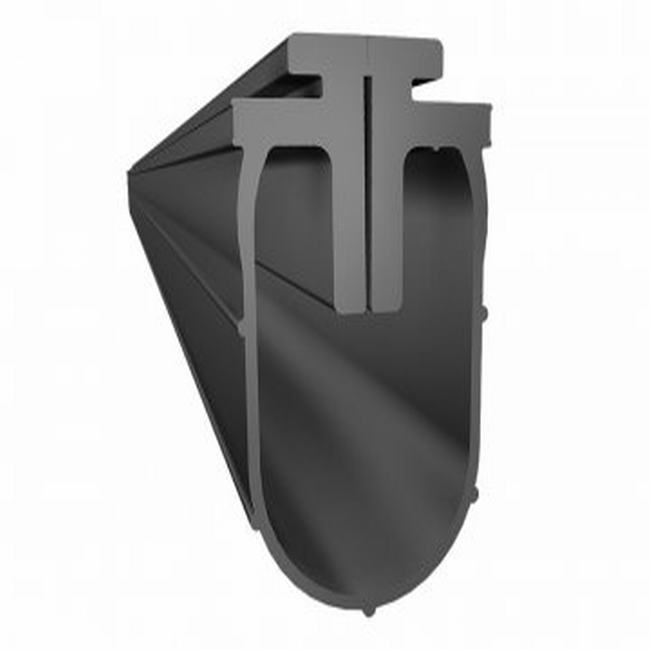Automatic door seals, also known as automatic door bottom seals or automatic drop-down door seals, are essential components in building infrastructure, particularly in commercial and public spaces. These seals play a critical role in ensuring the energy efficiency, security, and accessibility of automatic doors. In this comprehensive description, we will explore automatic door seals in detail, covering their functions, types, installation, benefits, and considerations.
1. Functions of Automatic Door Seals:
Automatic door seals serve several vital functions:
a. Energy Efficiency: They help maintain the indoor climate by sealing gaps at the bottom of doors, preventing the exchange of hot or cold air and reducing energy consumption for heating and cooling.
b. Sound Insulation: These seals minimize noise transmission between spaces, contributing to a quieter and more comfortable environment.
c. Security: Automatic door seals enhance security by preventing unauthorized access and reducing the risk of forced entry through gaps beneath the door.
d. Weather Protection: They create a barrier against wind, rain, snow, and dust, keeping the interior space clean and dry.
e. Accessibility: Automatic door seals can help ensure that doors comply with accessibility standards by providing a smooth transition between different floor surfaces, preventing tripping hazards.
2. Types of Automatic Door Seals:
Several types of automatic door seals are available to suit different door types and requirements:
a. Drop-Down Seals: These seals are installed at the bottom of the door and automatically drop down when the door is closed, sealing the gap between the door and the floor. They are commonly used in commercial settings.
b. Brush Seals: Brush seals consist of bristle-like filaments that form a flexible barrier. They are versatile and can be used on various door types and sizes.
c. Bulb Seals: Bulb seals have a bulb-shaped profile that compresses against the door frame, creating an effective seal. They are often used in overhead doors.
d. Sweep Seals: Sweep seals are attached to the door and sweep across the floor as the door closes, creating a seal. They are commonly used in residential settings.
e. Threshold Seals: Threshold seals are installed at the threshold of the door frame to provide a barrier against drafts and weather.
3. Installation Process:
The installation of automatic door seals typically involves the following steps:
a. Measurements: Measure the width and height of the door to determine the appropriate seal size.
b. Positioning: Attach the seal to the door or threshold, ensuring it aligns properly with the door frame or floor.
c. Adjustment: Some seals may require adjustments to ensure a proper fit. This may involve trimming or modifying the seal.
d. Fastening: Secure the seal in place using screws, adhesive, or other appropriate fasteners.
e. Testing: Test the door to ensure that the seal operates smoothly and creates a tight seal when the door is closed.
4. Benefits of Automatic Door Seals:
a. Energy Savings: By reducing air leakage, these seals help lower heating and cooling costs, contributing to energy efficiency.
b. Noise Reduction: Automatic door seals minimize sound transmission, creating a quieter and more comfortable indoor environment.
c. Improved Security: They enhance security by sealing gaps that could be exploited by intruders.
d. Weather Protection: Automatic door seals protect against the elements, preventing moisture, wind, and dust from entering the building.
e. Accessibility Compliance: They aid in compliance with accessibility standards, ensuring that doors are accessible to individuals with mobility aids.
5. Considerations:
a. Door Type: Choose the appropriate seal type for the specific door type and application.
b. Environmental Conditions: Consider the local climate and weather conditions when selecting door seals.
c. Durability: High-quality materials and construction are essential for long-lasting performance.
d. Installation: Proper installation is crucial for the seal to function effectively.
e. Maintenance: Regular maintenance, including cleaning and lubrication, can extend the life and effectiveness of automatic door seals.
In conclusion, automatic door seals are essential components for maintaining energy efficiency, security, and accessibility in buildings with automatic doors. By sealing gaps, insulating against sound and weather, and providing a smooth transition, these seals enhance the overall functionality and comfort of both commercial and residential spaces. Careful selection and installation of the appropriate seal type are vital for maximizing their benefits.










